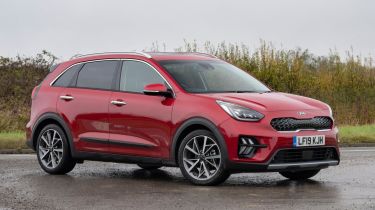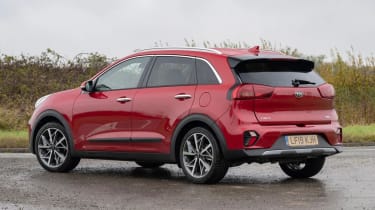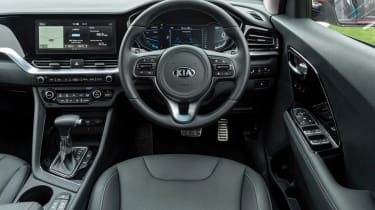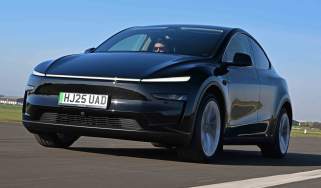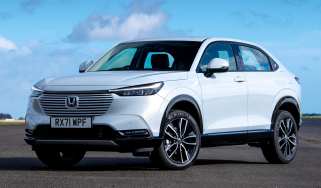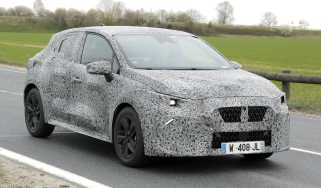Used Kia Niro (Mk1, 2016-2022) review
A full used buyer’s guide on the Kia Niro covering the Niro Mk1 that was on sale between 2016 and 2022
Verdict
The Kia Niro and e-Niro have won a slew of awards since they were introduced, and we were among many publications to lavish praise on these multi-talented family cars. In 2019 DrivingElectric named the e-Niro its Electric Car of the Year; the same year it was our Affordable Electric Car of the Year. So it was no surprise that when we pitted a Niro PHEV against a plug-in hybrid MINI Countryman, the Kia came out on top; the result was the same in our head-to-head against the Hyundai Kona. When we ran an e-Niro on our fleet, we concluded: “The Kia e-Niro is a great family car that happens to be electric. It’s better to drive than many petrol cars, and way cheaper to run.” Overlook the Niro at your peril.
Widespread electrification has been a long time coming, with most mainstream car makers slow to introduce new products.
The market is now awash with hybrids, plug-in hybrids and electric cars, but six years ago it was a different story, with Kia at the vanguard with its Niro.
Designed from the outset as an electrified family car, the Niro showed other car makers how to do things. Whichever powertrain was chosen, the car was packaged efficiently, with a long range, lots of standard equipment and a decent level of reliability included for good measure.
Used - available now
Of course this shouldn’t have surprised anyone because these have been Kia strengths for years. And even now, despite many alternatives reaching the market, the Niro remains a very desirable used buy.
History
The Kia Niro went on sale in July 2016 in hybrid form only, with a 106bhp 1.6-litre engine and a 43.5bhp electric motor; they had a combined power output of 139bhp.
In September 2017, a plug-in hybrid (PHEV) was added to the range. This was treated by Kia as a standalone model within its line-up, but the trim level was based on the Niro 3.
The final variant was added in April 2019: the pure-electric e-Niro, available with just a single high-spec trim level.
A facelift for the hybrid and PHEV in July 2019 brought improved infotainment, extra driver-assistance systems, a design refresh plus an upgraded interior. In summer 2020, the e-Niro range was widened to include 2, 3 and 4+ trim levels.
Which one should I buy?
If your journeys are generally fairly local, any Niro is desirable, but for longer or faster trips, the PHEV or e-Niro are better suited, although the latter is more expensive. Indeed, unless you have a cheap energy deal it might be that the e-Niro is too costly to run, so do the maths before buying.
All Niros are packed with kit, the entry-level 2 having 16-inch alloys, dual-zone climate control, voice recognition, adaptive cruise control, auto headlights and wipers, privacy glass and rear parking sensors.
The PHEV 2 also has front sensors, which are standard on the Niro 3 along with 18in wheels, navigation, leather, plus heating for the steering wheel and front seats.
The Niro 4 has LED headlights, heated outer rear seats, a sunroof and a JBL hi-fi.
Alternatives to the Kia Niro
Whereas the current Niro has lots of competition, the original was up against few hybrid, plug-in hybrid or electric rivals.
For example, the BMW 225xe Active Tourer PHEV is more of an MPV than an SUV, but the Hyundai Kona Electric was a direct rival to the e-Niro. The MINI Countryman was another PHEV of the time, while the Mitsubishi Outlander PHEV is readily available thanks to lots of fleet sales.
The Toyota C-HR is a self-charging hybrid that’s plentiful and hugely competent; this is closely related to the Lexus UX, which is more luxurious and more expensive.
More recent arrivals include the Toyota Yaris Cross and the Renault Captur E-Tech, which are hybrids rather than PHEVs. Electric alternatives include the Peugeot e-2008, the Volkswagen ID.3 and the Citroen e-C4, plus the bigger Skoda Enyaq.
What to look for
Real range
Kia claimed a maximum EV range of 30 miles for the PHEV. This isn’t usually achievable, with owners getting about 25 miles.
Headlights
One of the hottest topics in forums is the poor halogen headlights. It’s possible to fit Osram Nightbreaker bulbs, which are better.
Battery
The 12-volt battery can go flat, because of a current drain. This could be from the fuel pump, the audio system, the boot light or the door locks.
Towing
In some markets the Niro hybrid was available with a towing pack. UK buyers were denied this, but dealers could install a tow bar to take a bike rack.
Common faults
The Niro and e-Niro were rated separately in our 2022 Driver Power new-car survey, but both ranked highly, with good scores for reliability and build quality. Add in the fact that many used examples will have some of their seven-year/100k-mile warranty left, and you’re on to a winner.
Interior
There’s very little to separate the Niro’s dashboard from the e-Niro’s, the key difference being that the latter has a rotary selector for the gearchange. Other than that, all Niros have a clearly laid-out dashboard that’s finished to a high standard, with a responsive infotainment system and configurable instrumentation.
Cabin space is also good, with plenty of room for four adults plus a child. The Niro has an acceptable 382/1,380 litres of boot capacity; in the PHEV this falls to 324/1,322 litres, while the e-Niro boosts it to 451 or 1,405 litres.
Running costs
No matter what powertrain it has, every Niro will need to be serviced every 12 months or 10,000 miles. The hybrid and PHEV editions cost the same to maintain, with services 2-7 pegged at £288, £184, £288, £155, £318 and then £276. Costs for the e-Niro are £189, £256, £189, £94, £369 and £94.
Included in these costs is fresh brake fluid every two years; on its own this costs £63, while the coolant doesn’t have to be replaced until 100,000 miles, then it needs to be renewed every 20,000 miles. All Niro engines are fitted with a timing chain so there’s no cambelt to replace, and to help spread the cost of maintenance, service plans are available.
Recalls
The Niro has been recalled twice so far, the first time being in August 2018, when 5,012 cars were affected. These were all built between November 2016 and September 2017, and they left the factory with poorly made actuators in the clutch housing. As a result, there was a chance that the oil seal within the transmission could become damaged, leading to fluid leaks, which in turn could lead to electrical short circuits. The solution was to repair or replace the actuator.
The most recent recall came in May 2019 and this time 5,021 Niros were affected, once again made between November 2016 and September 2017. This time the problem was overheating within the Power Assembly Relay inside the battery packs of hybrid and plug-in hybrid Niros. New relays were fitted if necessary.
Driver Power owner satisfaction
The Niro has had a superb run of results in our Driver Power new-car surveys. On its debut in the 2018 survey, it finished in second place out of 75 entries, then it came 10th in 2019, fourth in 2020, 15th in 2021 then 12th in 2022, with the e-Niro coming 20th separately. The low running costs are the Kia’s star attraction, but owners also like the good ride quality, the fine reliability and standard safety kit.
Head over to our Find a Car service to get a great deal on a used Kia Niro or use our Free Car Valuation tool for a price on a specific car.

